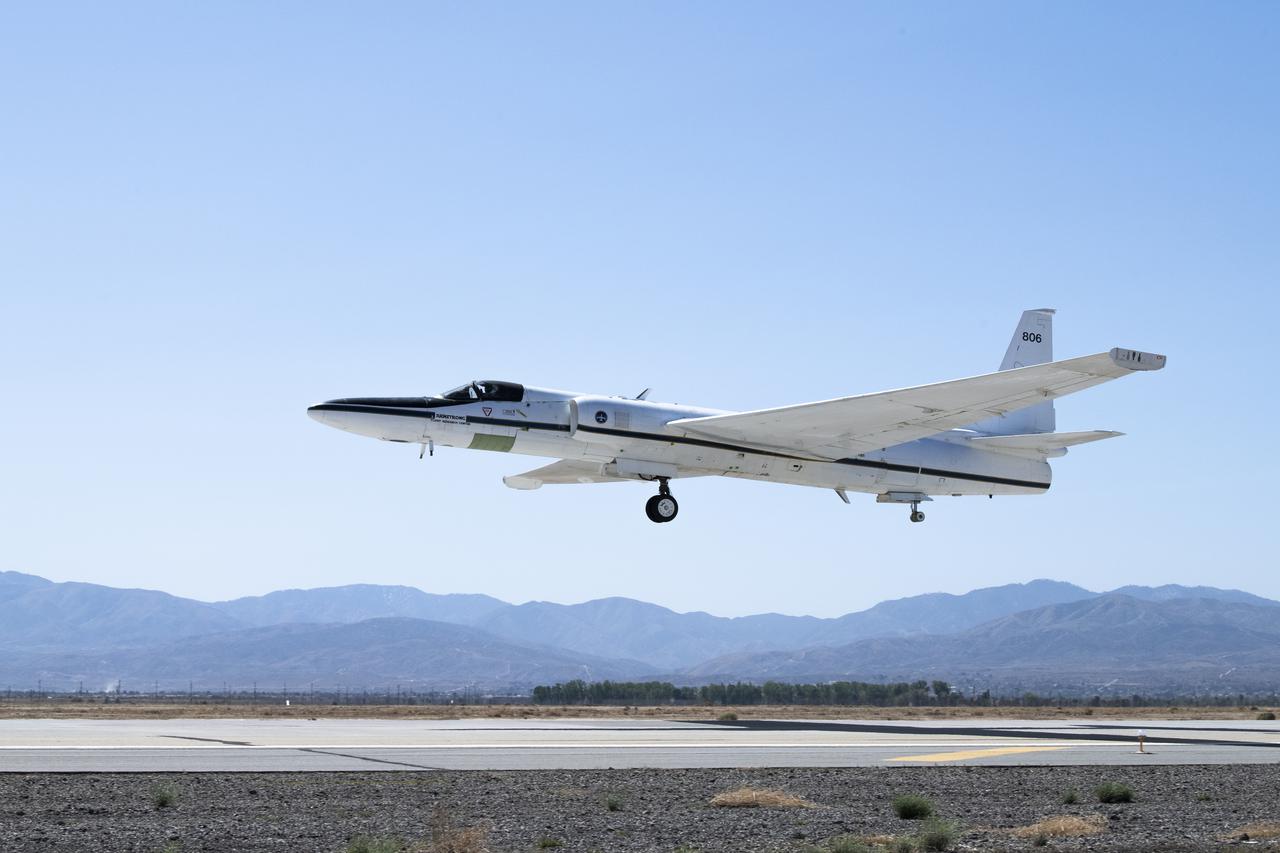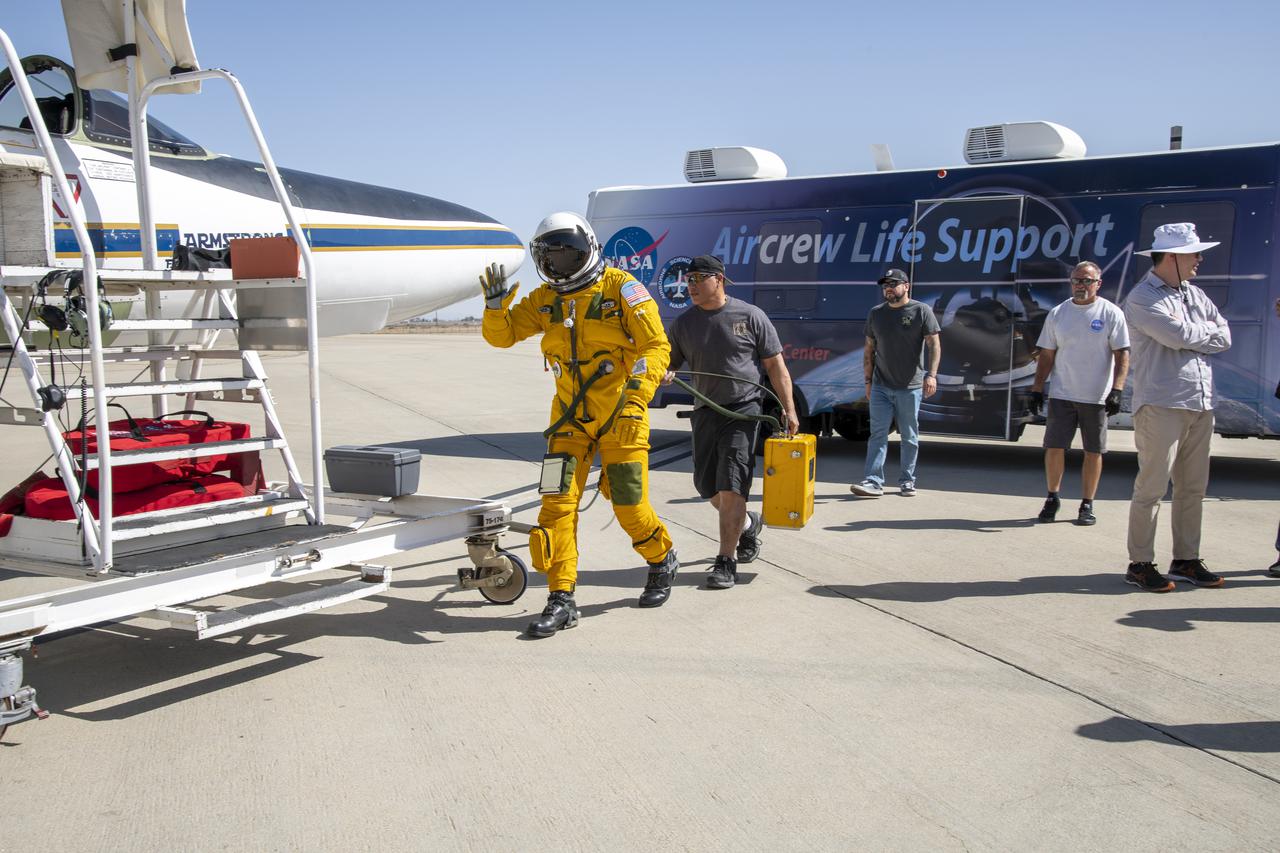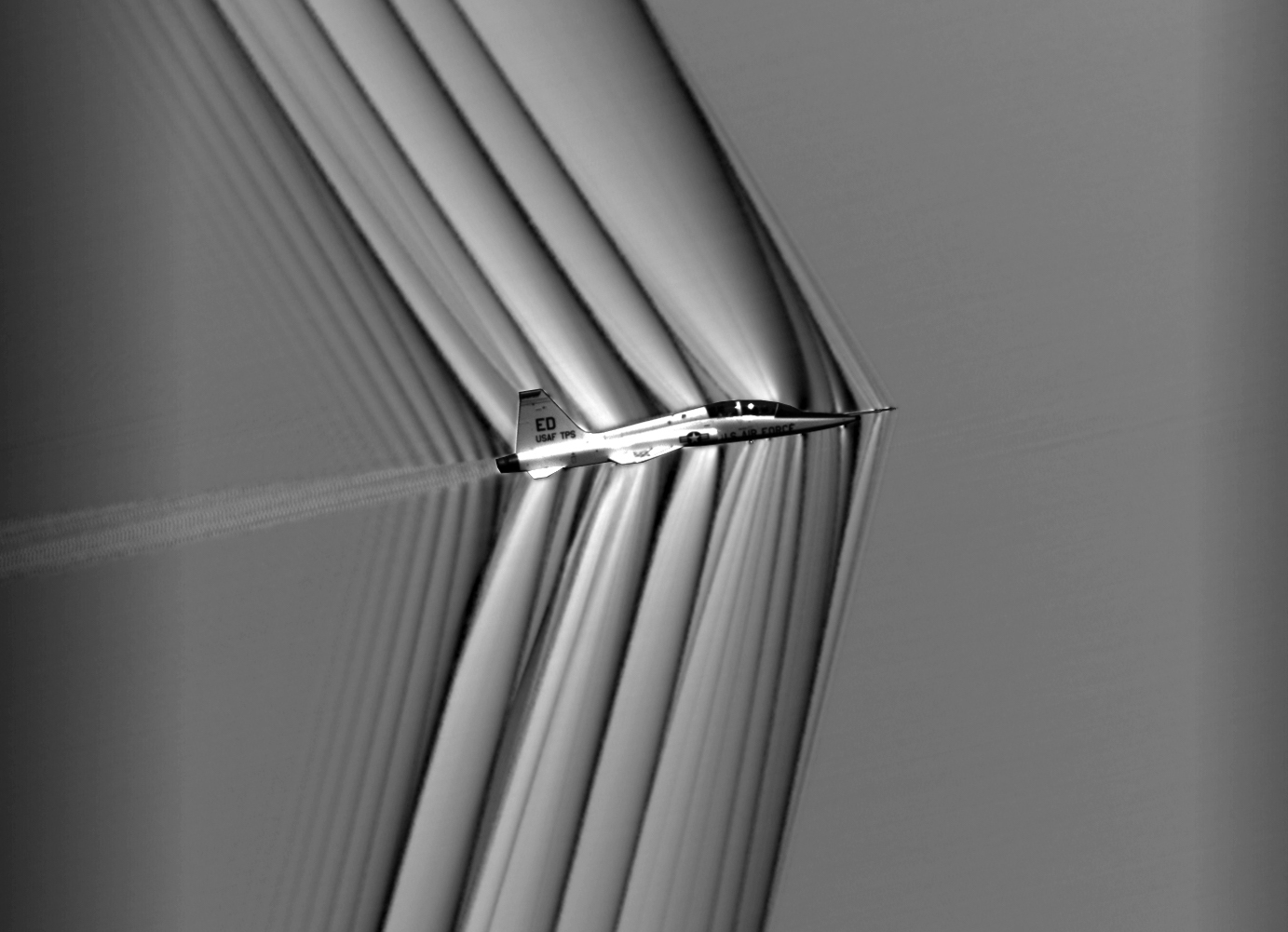NASA’s ER-2 high-altitude aircraft No. 806 returned to flight after three years of significant modifications and heavy maintenance.
Flying from NASA’s Armstrong Flight Research Center Building 703, the ER-2 conducted its first low-level flight on Mar. 21 since it was disassembled in October 2018.
During the maintenance period, pilot safety was enhanced through the Cockpit Altitude Reduction Effort, or CARE. The modification allows the pilot to safely operate the ER-2 by reducing effective cockpit altitude from 29,000 feet to 15,000 feet altitude when operating at 65,000 feet. Changing the altitude in the cockpit significantly reduces the possibility of decompression sickness.
Another important modification to the ER-2 utilizes the Automatic Dependent Surveillance Broadcast (ADS-B) technology. The installation of the ADS-B system makes flying the ER-2 safer by allowing the pilot increased traffic situational awareness. The ADS-B system also brings the ER-2 in compliance with the Federal Aviation Agency and the International Civil Aviation Organization to operate in the national and international airspace.
Following a series of check flights on Apr. 7, the ER-2 will resume flying missions for NASA’s Earth Science Division.
NASA Armstrong operates two ER-2 aircraft to collect information about Earth resources, celestial observations, atmospheric chemistry and dynamics, and oceanic processes. The aircraft fly as high as 70,000 feet. and are also used for electronic sensor research and development, satellite calibration, and satellite data validation.
For more information on the ER-2 aircraft, visit: https://www.nasa.gov/centers/armstrong/news/FactSheets/FS-046-DFRC.html







































